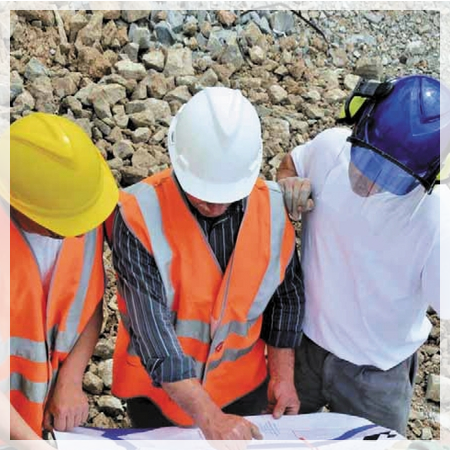Currency
July 16, 2017

This article sets out to explain the regulatory requirements that must be met in order to legitimately offer a PPE product on the European market. It does not attempt to deal with other issues such as wearer acceptance, styling, branding, or any other user requirements. The CE certification is accepted as being compliant with the legislation in many other countries and regions.

The article also assumes that any marking or claims for that product are genuine, however this does not absolve the user from ensuring the bona fides of such markings or claims. A few years ago the term “knock-off” referred to a look-alike product that shared certain design characteristics to mimic the appearance of an established product.
In no way detracted from its legitimacy as genuine certified PPE. These days the term carries more sinister connotations, as the world of PPE has fallen within the sights of the forgers and fakers. As is evident from the cosmetics, fashion, consumer electronics, tobacco, alcohol, and even the foodstuffs markets, the counterfeiters are very good at it, and care is needed to be sure that the assumed protection offered is genuine.
Short of testing or investigating very item purchased, careful sourcing is the best way of avoiding this risk. Established distributors are the safest option, with internet, market traders or stock disposal outlets constituting the highest risk. Nonetheless with many producers sourcing from overseas manufacturers there remains an element of risk wherever PPE manufacture is out-sourced, and users should bear this in mind.
This general overview is intended to be read in conjunction with category-specific articles, e.g. eyewear, hearing protection etc.
European legislation requires that all Personal Protective Equipment (PPE) is designed, manufactured, tested, marked, and packaged in line with “European Norms” (EN’s or standards in other words) appropriate for the hazards that each item of PPE is intended to protect against.
The published legislation requires that each product:
Is tested against standardised test procedures for the hazards protected against, using calibrated equipment prior to certification. The tests must be carried out by an approved testing house, e.g. SATRA or the British standards Institute. Test data provided by the manufacturer or brand owner is not acceptable, as the testing must be seen to be impartial.
Is clearly marked with the CE mark, displays the relevant EN code(s), and shows the level or type of hazard, in the form of standardised abbreviation or pictogram, against which the product is to be used. If it is not possible to mark the product (e.g. earplugs) then the primary packaging must bear the appropriate equivalent markings. Markings can be in the form of approved abbreviations, e.g. P1, P2 etc for respiratory particulate hazards, or in the form of approved pictograms, e.g. abrasion, puncture, cut or chemical resistance for gloves. Other critical information may be required, e.g. the noise attenuation performance for hearing protection products. In some life-threatening (mortal) risks, the product has a limited shelf life, and its expiry date must be clearly marked, and explained within the leaflet. The manufacturer must be identified via a pre-allocated code character, and the code number of the certifying body must also be shown.
Has outer packaging which is also CE marked and shows the type of hazard for which the product is intended.
Includes a leaflet or outer packaging information describing the uses for which the product is approved, and including clear instructions on how to use the product safely. This also includes information on the certificate holder. Note that it remains the responsibility of the user to determine which PPE to select in order to protect against the hazards of each workplace environment. This is established through mandatory Risk Assessments, which must all be documented and published. Where risk levels are high then appropriate operator training should be provided by the employer.
Has packaging that preserves the performance characteristics of the product. For example filter respirators will become clogged with general dust and incur a drop in performance during storage if they are not packaged in a manner to prevent this.
Is sampled from manufactured output against published statistical samples, and re-tested on an on-going basis to ensure that product continues to reliably meet the standard required.
Some national certifications can be applied provided that they fall within or exceed the European Norm. For example the BS kite mark can still be seen on some PPE. This is becoming extremely rare, however the requirements are at minimum in line with those of the equivalent CE mark.
To help combat the problems of non-approved and counterfeit PPE, the BSIF has created the Registered Safety Supplier (RSS) Scheme. Companies displaying the scheme’s logo have signed a binding declaration that the safety equipment they offer meets the appropriate standards, fully complies with the PPE regulations and is appropriately CE marked.
Different hazards present different levels of risk to the wearer, and each hazard is classified into one of three categories:
Simple Risk. This might include general handling duties whereby there is no established risk of puncture, cut or abrasion to the hands.
Intermediate Risk. This covers hazards which, if not addressed, could cause serious harm to the wearer, but not in a manner that would be life threatening. An example might be protecting against noise levels that could cause damage to, or loss of, hearing at one or more sound frequencies.
Mortal Risk. This covers hazards of a life-threatening nature, such as corrosive or toxic materials, gases, vapours, extremes of temperature, electrical hazard, flammability or explosion. It is worth noting that some hazards that appear to be low risk can in fact constitute mortal risks that must be dealt with. All organic particles suspended in air constitute an explosion risk. A spark in a flour mill can be extremely dangerous. Any wearer may become sensitised to certain materials and suffer allergic reaction. Even sawdust can be the source of such a sensitisation.
The tests within each EN norm and the statistical sampling levels are commensurate with the level of associated risk. In the case of mortal risk this can be up to 100%. For example all electricians’ gauntlets for high voltage live working must be tested for pinholes to ensure that there is no chance of conduction or arcing through the gauntlet.
When read alongside category-specific articles, this general guide provides reliable advice on the European approval regime for PPE, distilled down from the necessarily detailed and complex full documentation. Manufacturers and distributors will willingly provide advice on specific applications upon request.
Contains public sector information published by the Health and Safety Executive and licensed under the Open Government Licence v1.0
Product Testing and PPE CE Marking by PPE.
SOURCE: https://www.ppe.org/product-testing-ppe-ce-marking/

The article also assumes that any marking or claims for that product are genuine, however this does not absolve the user from ensuring the bona fides of such markings or claims. A few years ago the term “knock-off” referred to a look-alike product that shared certain design characteristics to mimic the appearance of an established product.
In no way detracted from its legitimacy as genuine certified PPE. These days the term carries more sinister connotations, as the world of PPE has fallen within the sights of the forgers and fakers. As is evident from the cosmetics, fashion, consumer electronics, tobacco, alcohol, and even the foodstuffs markets, the counterfeiters are very good at it, and care is needed to be sure that the assumed protection offered is genuine.
Short of testing or investigating very item purchased, careful sourcing is the best way of avoiding this risk. Established distributors are the safest option, with internet, market traders or stock disposal outlets constituting the highest risk. Nonetheless with many producers sourcing from overseas manufacturers there remains an element of risk wherever PPE manufacture is out-sourced, and users should bear this in mind.
This general overview is intended to be read in conjunction with category-specific articles, e.g. eyewear, hearing protection etc.
Legislation
European legislation requires that all Personal Protective Equipment (PPE) is designed, manufactured, tested, marked, and packaged in line with “European Norms” (EN’s or standards in other words) appropriate for the hazards that each item of PPE is intended to protect against.
The published legislation requires that each product:
Some national certifications can be applied provided that they fall within or exceed the European Norm. For example the BS kite mark can still be seen on some PPE. This is becoming extremely rare, however the requirements are at minimum in line with those of the equivalent CE mark.
To help combat the problems of non-approved and counterfeit PPE, the BSIF has created the Registered Safety Supplier (RSS) Scheme. Companies displaying the scheme’s logo have signed a binding declaration that the safety equipment they offer meets the appropriate standards, fully complies with the PPE regulations and is appropriately CE marked.
Levels of Risk
Different hazards present different levels of risk to the wearer, and each hazard is classified into one of three categories:
The tests within each EN norm and the statistical sampling levels are commensurate with the level of associated risk. In the case of mortal risk this can be up to 100%. For example all electricians’ gauntlets for high voltage live working must be tested for pinholes to ensure that there is no chance of conduction or arcing through the gauntlet.
Summary
When read alongside category-specific articles, this general guide provides reliable advice on the European approval regime for PPE, distilled down from the necessarily detailed and complex full documentation. Manufacturers and distributors will willingly provide advice on specific applications upon request.
Contains public sector information published by the Health and Safety Executive and licensed under the Open Government Licence v1.0
Product Testing and PPE CE Marking by PPE.
SOURCE: https://www.ppe.org/product-testing-ppe-ce-marking/









